Learn how to add pony beads to your crocheting to make an easy weighted blanket! The best part? There's no need to pre-string the beads. You pick them up as you work.
This simple technique is also a fun way to add texture to your crocheted bags, pillows and baskets.
Get the free pattern and blanket weight calculator below or purchase the ad-free, printable PDF here.
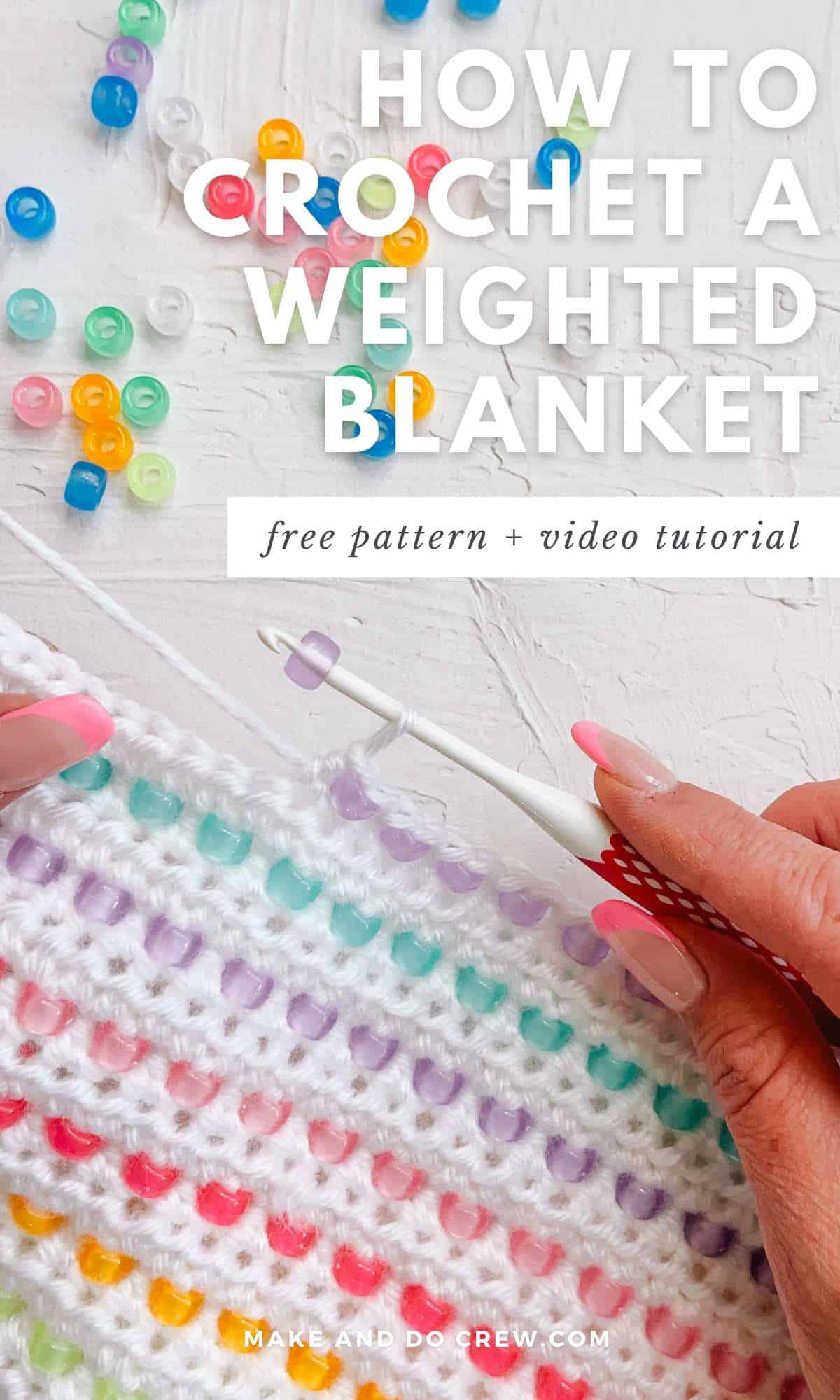
This weighted blanket tutorial includes affiliate links.
A Pony Bead Crocheted Weighted Blanket
While this method of adding beads to crochet has been around a long time, @StitchWitch_87 recently popularized it on TikTok.
As a mom of a family with high sensory needs, I couldn't resist trying this technique out to design a weighted blanket.
What Beads Can I Use?
In this tutorial, we're using plastic pony beads for a few reasons.
- They have a big enough hole to insert a 2.75-3.5mm crochet hook.
- They're able to be machine washed and dried.
- They are heavy enough to add weight to a blanket.
That said, this technique will work with any beads that you can insert a crochet hook through.

How to Add Pony Beads to Crochet Video
The following method allows you to add beads to your crochet fabric without needing to prestring them on your yarn.
This means you can incorporate them into your design for a single row, or many rows, every other stitch or less frequently. I love this technique because of the flexibility it offers.
Here's a step-by-step video tutorial where I demonstrate how to add pony beads to crochet fabric to make a weighted blanket.
Best Yarn to Use
I've found the best yarn to use for making a weighted blanket with beads is worsted weight. Medium weight yarn is able to fit through pony bead holes, while also allowing you to make quick progress.
Making a blanket is a great opportunity to use up scrap yarn, especially if you plan to use colorful pony beads.
Heaviest Yarns
I evaluated several worsted weight yarns to find the heaviest options. While the beads add a lot of the weight to the blanket, choosing a heavier worsted weight yarn can make the difference of several hundred grams in large afghan.
Here are some of the thickest worsted weight yarns for crocheting weighted blankets.
| Yarn | Grams per Yard |
|---|---|
| Lion Brand Basic Stitch | .54 |
| Lion Brand The Cottony One | .54 |
| Caron Simply Soft | .54 |
| Red Heart Comfort | .52 |
| Hobby Lobby I Love This Yarn | .56 |
| Bernat Satin | .50 |
Crochet Weighted Blanket - Free Pattern
How to Use These Instructions
Consider this a "recipe" for crocheting a weighted blanket. Below, you'll find information on how to make afghans in several sizes, but I also cover how to figure out the weight of your own design using the free calculator I built.
Use this info to make a heavy blanket that suits your exact needs!
Related: What DIY crochet tools are hiding in your junk drawer?
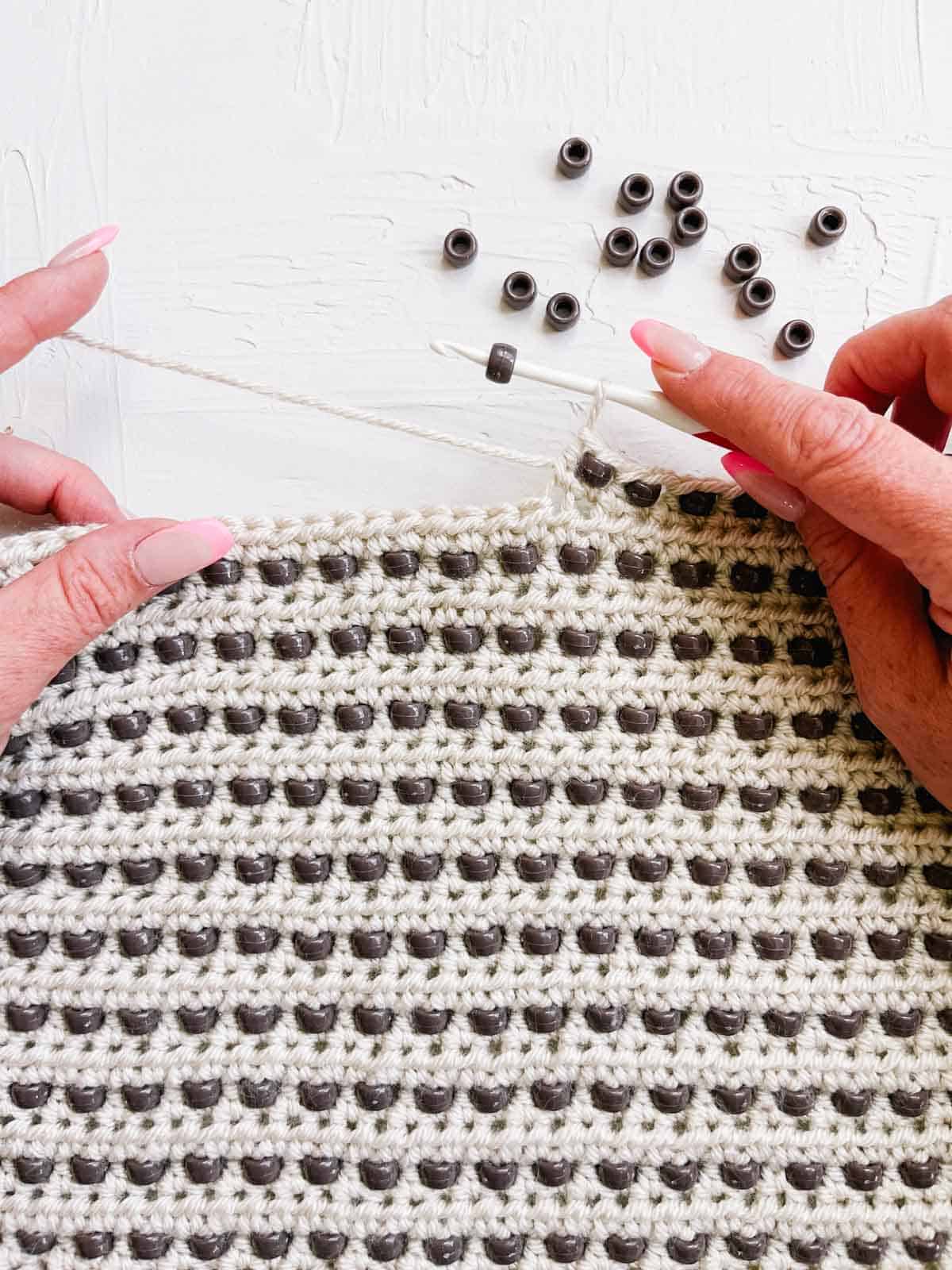
Supplies + Materials
• Lion Brand Basic Stitch Anti-Pilling Yarn (Weight: 4/medium - 185 yds, 3.5 oz, 100 g)
• Plastic pony beads (see below for amount needed)
• Tapestry needle
| Blanket Size | # Beads Needed | Yarn Needed (g) |
|---|---|---|
| XXS | 1548 | 254 |
| XS | 3132 | 510 |
| S | 4096 | 666 |
| M | 5400 | 876 |
| L | 6966 | 1128 |
| XL | 9504 | 1536 |
| XXL | 11663 | 1883 |
Recommended Crochet Hook Sizes
You'll need two hooks to make this project. A size H (5.00 mm) hook is used to work the non-bead rows. A size E (3.5mm) hook is used to work the bead rows.
For the small hook, I recommend trying your yarn and bead combo and choosing the largest size hook that works with the bead holes.
Skill Level
Advanced beginner
Measurements
Follow the blanket sizes given below, or work any odd number of stitches to create your own size.
| Blanket Size | Width (inches) | Height (inches) | Chains to Start | Number of Rows Tall | Weight (lbs) |
|---|---|---|---|---|---|
| XXS | 20 | 30 | 75 | 87 | 1.5 |
| XS | 30 | 40 | 111 | 117 | 3 |
| S | 36 | 44 | 131 | 129 | 3.9 |
| M | 42 | 50 | 153 | 145 | 5.1 |
| L | 48 | 56 | 175 | 163 | 6.6 |
| XL | 54 | 68 | 195 | 199 | 9 |
| XXL | 60 | 75 | 217 | 219 | 11.1 |
How to Use this Chart:
Step 1: Choose a blanket width.
Step 2: Work the suggested number of chains to start.
Step 3: Work the suggested number of rows.
Weighted Blanket Calculator
I developed a simple calculator to help you know how many stitches, beads and yarn you'll need to make a blanket of a any size and weight.
Wanna save this pattern?
Click here to make copy of the calculator and fill in the dimensions you'd like.
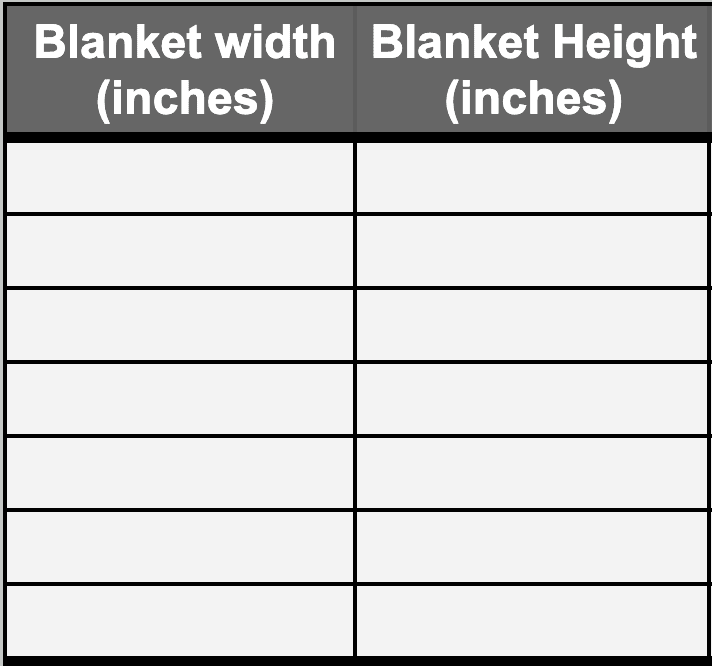
Gauge
The blanket recipe below assumes your gauge is approximately:
14 stitches x 12 rows = 4" (10 cm)
It's fine if your gauge differs from the pattern gauge, but it also means your finished blanket size will vary.
Abbreviations + Glossary (US Terms)
ch – chain
hdc – half double crochet
sc – single crochet
slst – slip stitch
rsc – reverse single crochet (aka the crab stitch)
Special Stitches
sc-bead – single crochet with a bead
How to add a bead to a single crochet stitch:

Step 1: Place bead on crochet hook.
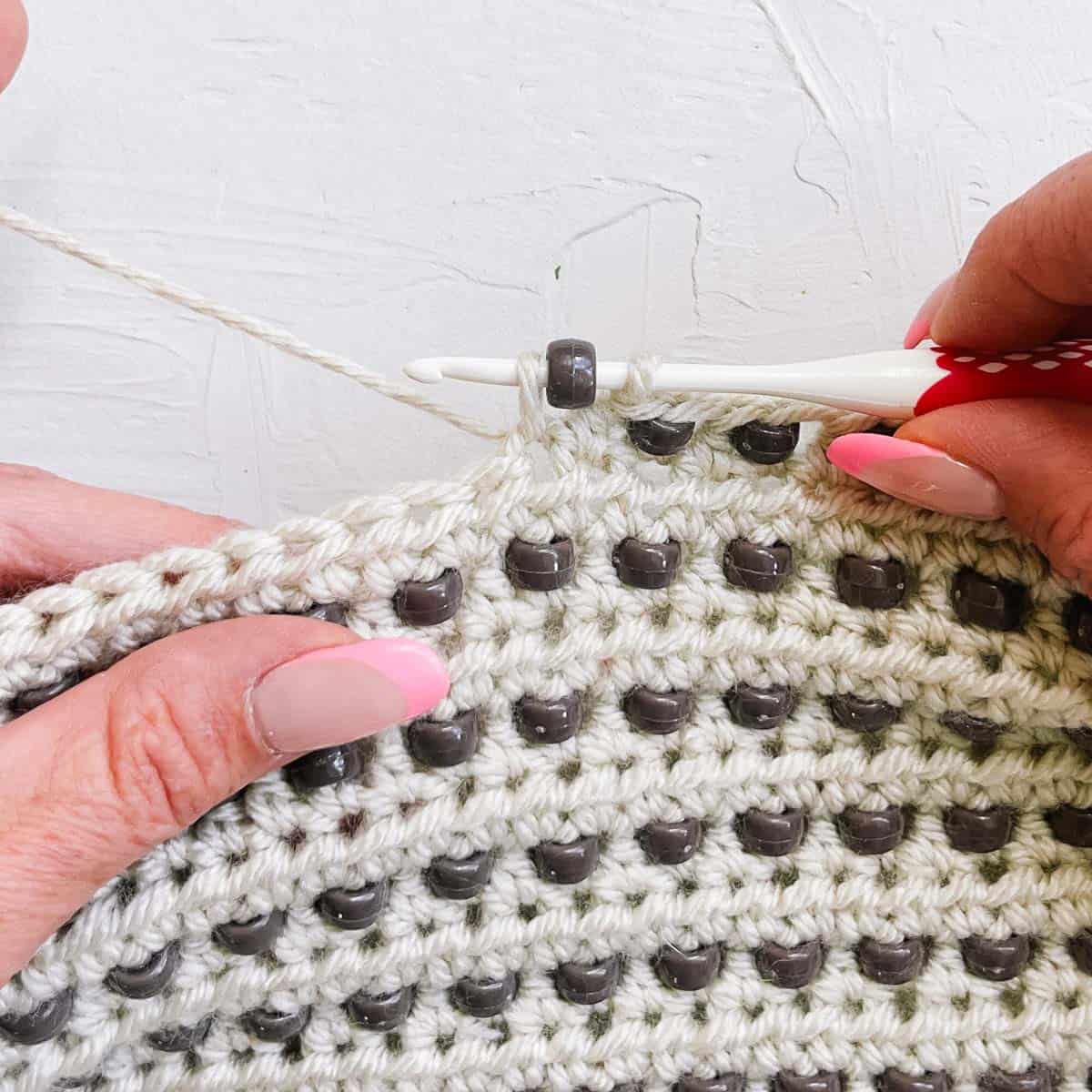
Step 2. Insert hook in next stitch and pull up a loop.
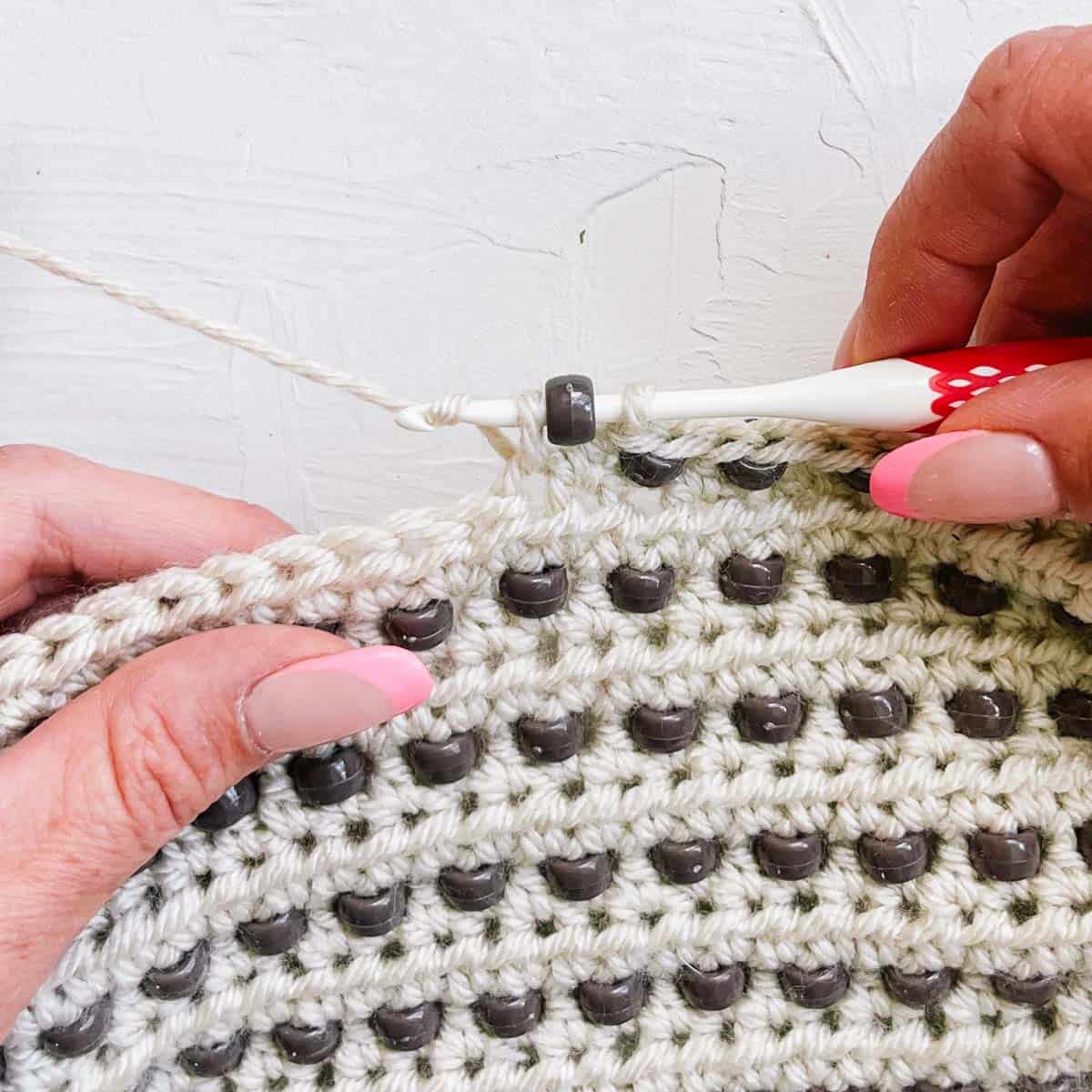
Step 3: Yarn over.
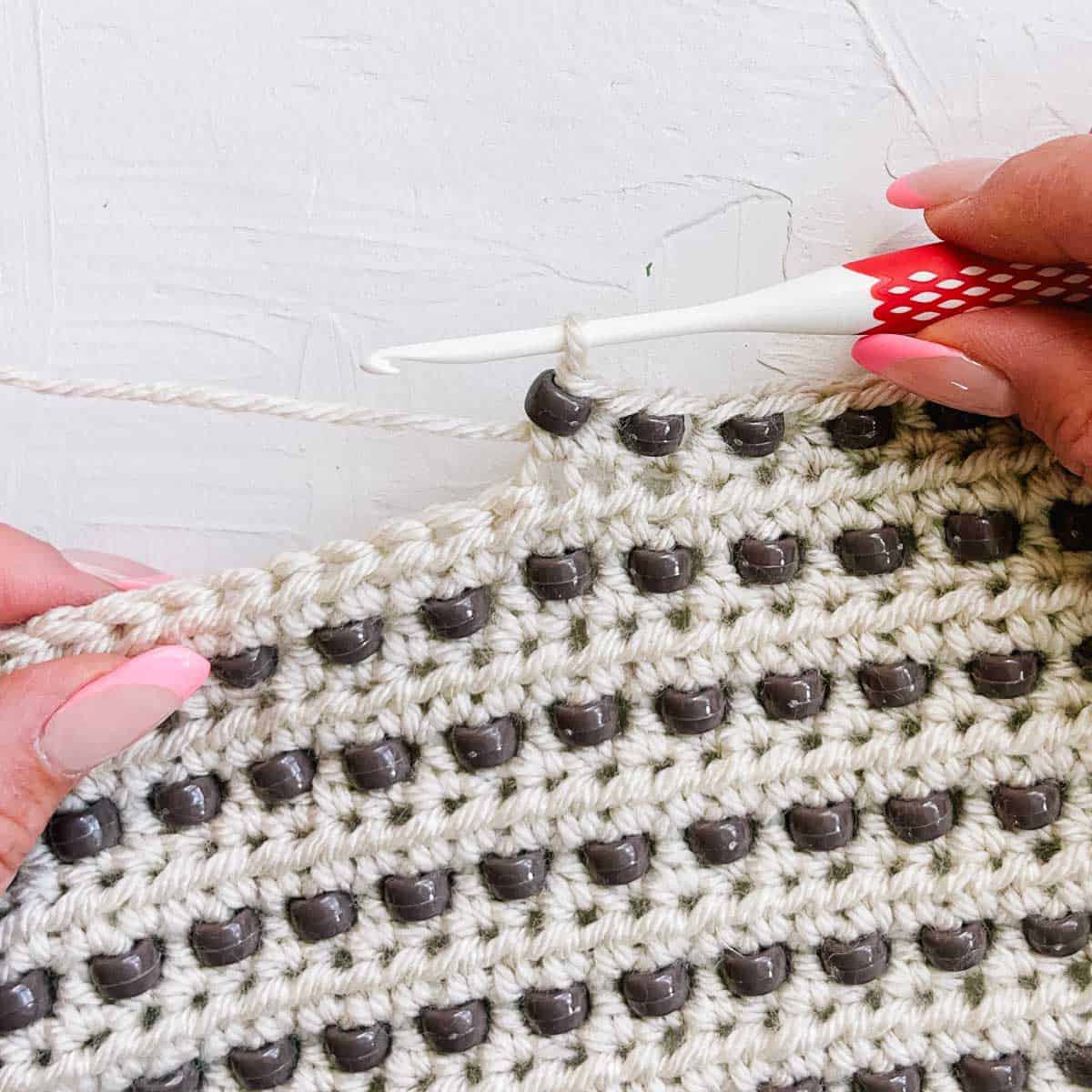
Step 4: Pull through first loop, bead and second loop.
Print This Pattern: purchase the ad-free, printable PDF
Main Weighted Blanket
Notes:
- Follow the blanket size guide above to figure out the exact number of stitches and rows to work.
- Two chains at beginning of row don't count as a half double crochet.
With larger hook:
Foundation Chain: Chain a multiple of 2 + 1 (aka any odd number of stitches).
Row 1 (RS): Skip first 2 chains, hdc in each chain to end.
Switch to smaller hook:
Row 2 (WS): Chain 2, hdc in first stitch, *sc-bead in next stitch, hdc in next stitch; rep from * to end of row.
(This row should end with a hdc in the last stitch. Count your stitches here. You should have two less than the number of chains you started with. Going forward this stitch count should remain the same in each row.)
Switch to larger hook:
Row 3 (RS): Ch 2, hdc in each stitch to end of row.
(Said another way, you're placing a hdc on each side of each bead. Then, you're working one last hdc in the final stitch of the row. Count your stitches. You should have the same number of stitches you did in Row 1.)
To continue:
Continuing to alternate between the larger and smaller hooks, repeat Rows 2 and 3 until you have the number of bead rows listed for your blanket size. Then work one more Row 2.
Keep yarn attached if you'll be using it for a border.

Adding a Border
This is a fun chance to personalize the look of your weighted afghan with a unique trim. I'm providing instructions for my favorite minimalist edging below, but you can check out lots more crochet border ideas here.
With larger hook:
Foundation Round (RS): With the right side of the blanket facing, ch 1, sc in each stitch around blanket, placing one sc in each raw row edge and 3 sc in each corner, slst to first sc of round to join. Do not turn.
(The stitch count isn't important here, so modify the frequency of single crochet stitches in the raw row edges if necessary to get a smooth, flat foundation. This might mean working an extra sc every forth row, for example.)
Round 2 (RS): Ch 1, rsc in each sc around, slst to first st to join. Fasten off.
(This round might feel very weird, but you are indeed supposed to single crochet backward in the opposite direction you're used to. It's okay that the stitches are twisting; this is intentional.)
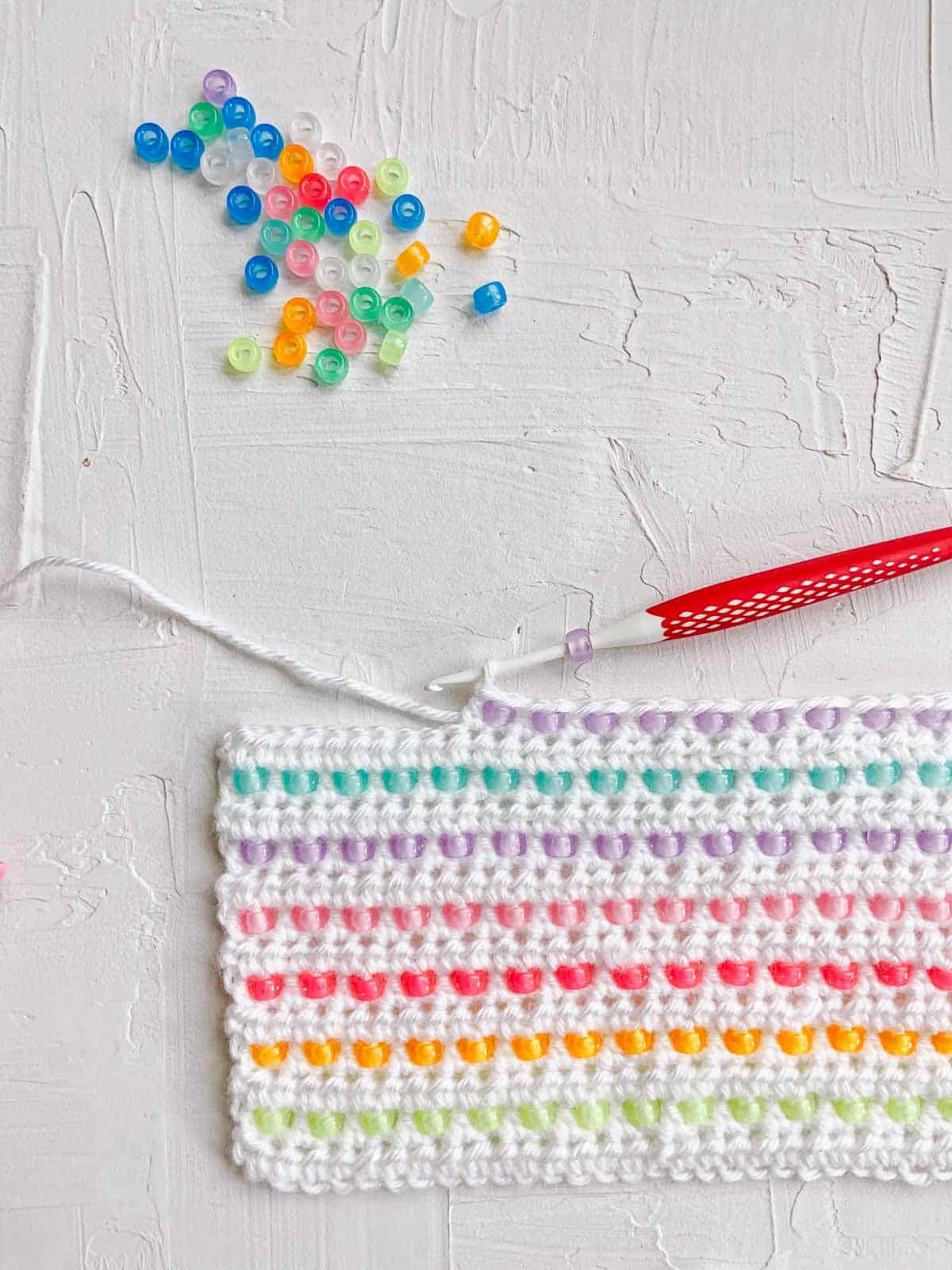
Finishing
Weave in ends. If desired, give your blanket a gentle blocking.
Wrap up in the comforting goodness of your very own handmade pony bead weighted blanket!
More Free Afghan Patterns
Whether you're into making quick baby blankets or mastering C2C crochet, we've got plenty of cozy patterns to keep you busy.
- 3 Day Fast Crochet Ripple Blanket Pattern + Video
- Supernova Crochet Square Star Blanket Pattern + Video
- Ebb and Glow | Stunning Moss Stitch Blanket Pattern
- 40+ Free Crochet Blanket + Afghan Patterns | Captivating Designs
- C2C Crochet Butterfly Blanket | Whimsical Free Pattern
- How To Design a Temperature Blanket + 25 Free Patterns
That was so fun! Now what?
Invitation to our Facebook group
Come discuss crocheting weighted blankets and lots of other projects and techniques in our Make & Do Crew Facebook group. Here thousands of helpful crafters answer each other's questions and share their stitches. Join us!

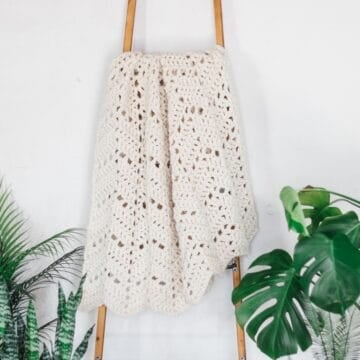
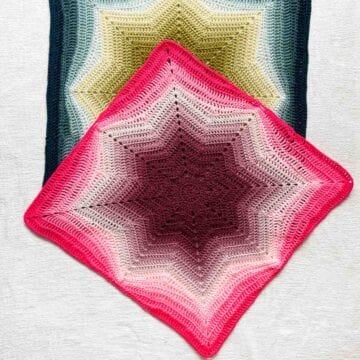
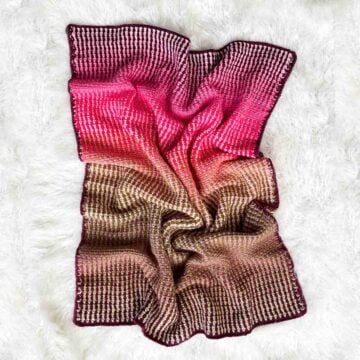
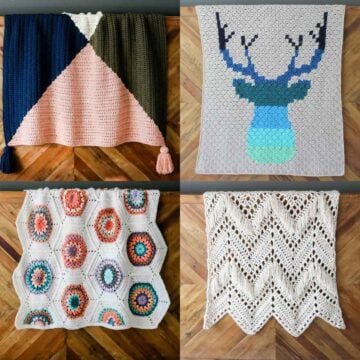
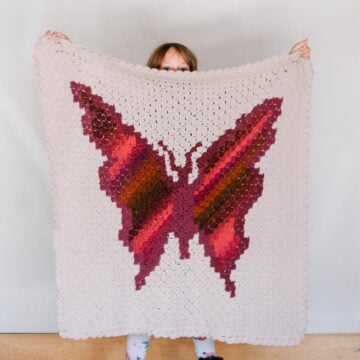
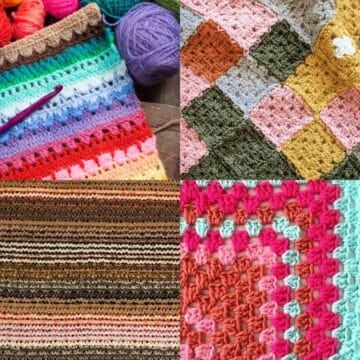
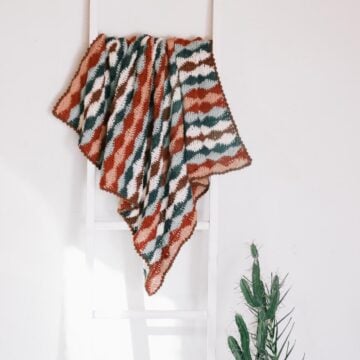


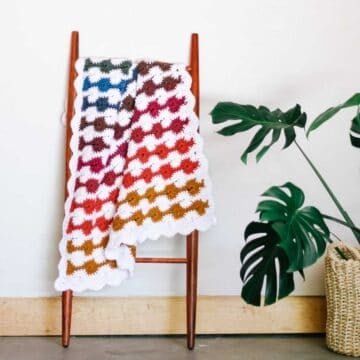
Leave a Reply